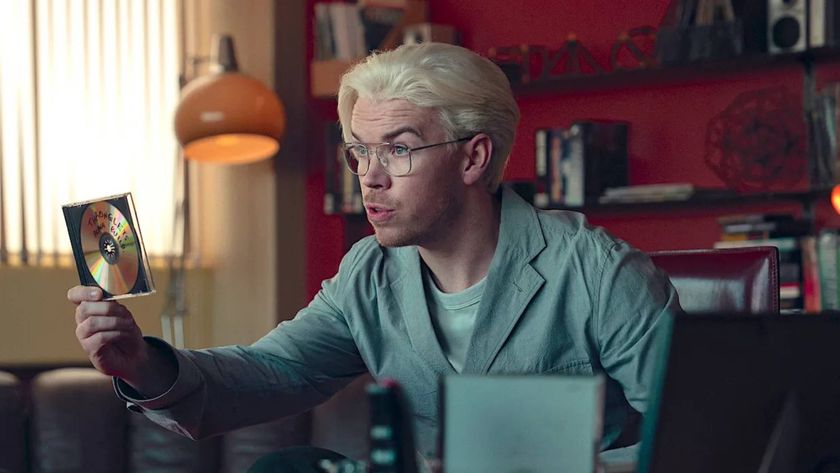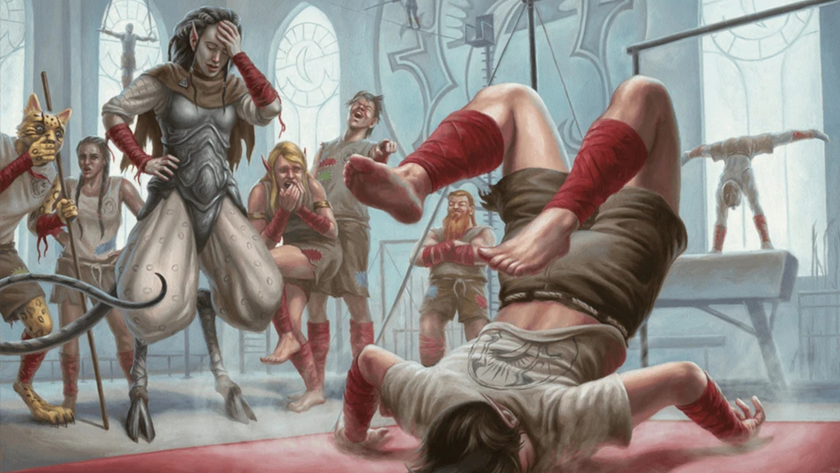Why you can trust 12DOVE
A young girl draws a magic chalk door on her bedroom wall and pushes it open. She steps into a banquet hall, where a slumbering monster sits at a table loaded with food. The Pale Man (for that is his name) doesn’t notice her; his deformed, domed head has no eyes, just a bloody mouth and two gaping nostrils. The little girl approaches, terrified but brave. Forgetting every warning, she steals a morsel of food. The Pale Man jerks awake, picking up his eyeballs from the plate in front of him. He inserts the peepers into the palms of his hands and chases her through the corridors...
Sometimes even adults need fairytales. Guillermo del Toro’s Pan’s Labyrinth is Grimm for grown-ups, its pantheon of monsters destined to send ankle-biters screaming back to playschool. It’s refreshingly mature, a dark and majestic piece of fantasy full of satyrs, toads and fairies more likely to shape-shift into praying mantises than Tinkerbell. Imagine Alice In Wonderland marinated in the bug/body horror of David Cronenberg, Spanish painter Goya (the gory picture Saturn Devours His Children is a touchstone) and del Toro’s favourite Victorian illustrator Arthur Rackham (Google away... it’s worth it).
The Mexican director has been one to watch ever since he debuted with vampire curio Cronos back in 1993. For many he’s stayed a vague presence, a hard-to-pronounce name hovering on the margins of the horror/comic-book/fantasy mainstream: Mimic, Blade II, Hellboy. Few saw his brooding, ill-boding ghost story The Devil’s Backbone, but those who did can’t forget it. Pan’s Labyrinth could be its unofficial sequel, a companion piece that returns to the Spanish Civil War to chart the evil that men do... an evil more desperately unspeakable than any of the supernatural ghosts or mythic monsters spawned by the writer/director’s imagination.
Viewing the bloody aftermath of the war from the waist-high vantage point of his child heroine Ofelia (12-year-old Baquero, stoic in the face of even the weirdest of puppet/CGI beasties), del Toro splits the action between reality and fantasy. When she stumbles across an abandoned labyrinth hidden in the forest, Ofelia finds a fawning faun, Pan (Jones), who tells her she’s a princess from the underworld. Like any self-respecting satyr, he can’t be completely trusted – his attentions laced with threat and a slight hint of sexual menace – but Ofelia accepts the series of tasks he gives her to complete.
What astounds in Pan’s Labyrinth is del Toro’s vision, his sketchbook doodles crafted into reality as the production team bring haunted forests, subterranean worlds and giant toads to enchanting life. Every fantasy moment drips with significance (and slime), a Freudian-laced storyline that’s steeped in the kind of myth familiar from Joseph Campbell’s landmark book (turned screenwriter’s resource pack) The Hero With A Thousand Faces. Its sylvan world is held together by little-known thesp Doug Jones, who’s made a career out of playing monster bit parts (a Yeti in Monkeybone, a Morlock in The Time Machine, Abe Sapien in Hellboy). In his double role as Pan and The Pale Man, Jones deserves plaudits as the new Andy Serkis.
Pan’s world may be a dark fantasy, but it’s nowhere near as disturbing as the world Ofelia’s trying to escape from. There, her stepfather Captain Vidal holds court, ruling his military post with vicious, clinical violence as he tries to stamp out left-wing guerrillas. He’s the true monster of this tale, a fascist ogre in thrall to the jackboot-clad domination of Franco’s regime. Setting his mythical beasts alongside López’s portrait of evil, del Toro scores his great coup – dissecting the horror of fascism under the guise of a fantasy flick. As in The Devil’s Backbone, this is horror/fantasy cinema moulded around a political core, the director’s abhorrence of right-wing thuggery the movie’s moral centre.
At times the FX and comic-book fantasy sit uncomfortably with the politics, but for the most part it works terrifically. Like his friends – and fellow Mexican émigrés – Alfonso Cuarón (director of Children Of Men and co-producer on Pan’s Labyrinth) and Alejandro González Iñárritu (Amores Perros, the forthcoming Babel), del Toro is committed to recharging genre cinema with political conscience. When the dust of 2006 settles, Pan’s Labyrinth will likely stand as one of the year’s best films – an exquisite, dark carnival destined to unspool again and again through troubled brains on many a sleepless night.
A stark, disturbing fairy story for adults. Its provocative vision of the monsters of fascism and childhood packs chilling power.
The Total Film team are made up of the finest minds in all of film journalism. They are: Editor Jane Crowther, Deputy Editor Matt Maytum, Reviews Ed Matthew Leyland, News Editor Jordan Farley, and Online Editor Emily Murray. Expect exclusive news, reviews, features, and more from the team behind the smarter movie magazine.

New Black Mirror season 7 trailer reveals how Will Poulter's Bandersnatch character returns to the Netflix show - with a Sonic the Hedgehog namedrop

Former Nintendo marketing leads say the Wii U flopped so bad that getting third-party support on Switch was "really hard," but the Switch 2 marks a new era: "There's no more proving yourself"

The Baldur's Gate 3-themed Stardew Valley mod that Larian boss Swen Vincke called "amazing" gets DMCA'd by D&D publisher Wizards of the Coast










